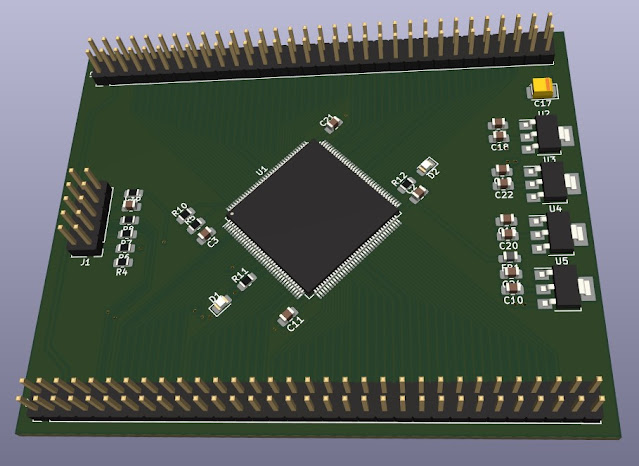With the development of my MIDI switch, I am as always confronted with the mechanical realization of the case. The problem is that I have made good progress in the development of the MIDI switch and I would like to put it in a box. It would be much easier to develop the software, rather than having a whole bunch of modules on the workbench.
But it is not at all easy to find a manufacturer able to produce a front panel at an acceptable cost. In fact, I never found one.
So, I decided to see if I could use the CNC that I own but have never used. I have owned this Colinbus since 2007, following an article by Elektor :
In fact, for lots of reasons, I never assembled this machine until 2016 or 2017, I'm not sure, where I started assembling it. And then I found myself confronted with the problem of the electronic control board. It was a proprietary board, so you had to get the proprietary software, which I couldn't do.
It must be said that this machine was no longer offered for a long time and that its electronic board was no longer able to communicate with the manufacturer's current software. So I decided to switch to a more current and above all more standard control board, I opted for a TinyG board from Synthetos :
And, in 2020, thanks to the first confinement in France, I took the opportunity to finalize the assembly of the machine with this new control board I wrote an article about it in French here. I was able to test the machine with the new board, as well as control software whose name I no longer remember.
But it wasn't working correctly. the X and Y movements were unable to realize the extent of their theoretical displacement.
Despite a whole series of tests, I was not able to find the cause of this malfunction. I assumed then that it was either the software, or the power of the laptop used, or mechanical alignment problems that prevented the correct operation of the CNC.
I dropped the case again until a few days ago. It must be said that I am really motivated to create a correct front panel for my MIDI switch. This time I used CNCjs. And I also changed the USB cable that I originally installed in the CNC :
And then, I don't know why, everything started working fine. I was able to move all three axes with no problem. The use of the keys of the keyboard for that allows precise and fast test. The only small problem is that I found that the machine generated a lot of extraneous noise, some of which seemed to me to resonate. Which is not good for the precision of the machine.
But, after having checked and perfected the tightening of all the screws of the machine, these parasitic noises have disappeared. So it looks like I am now able to perform drill tests with this machine. I still have to find suitable end mills as well collet chuck for the milling motor.
Because when ordering the machine, I also asked for a slightly more serious motor than the original one, but was obviously delivered without collet chuck : Optionnal :-(
In short, fifteen years later it seems to me that I have never been so close to finally using this CNC. Hoping that the final precision is correct, even if for my work on the front panel I don't need great precision.
The CNC, once well adjusted and tested with CNCjs:


















